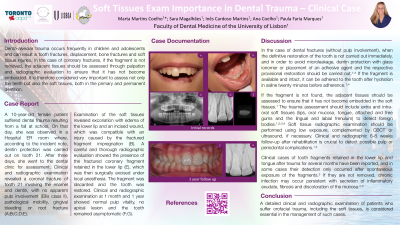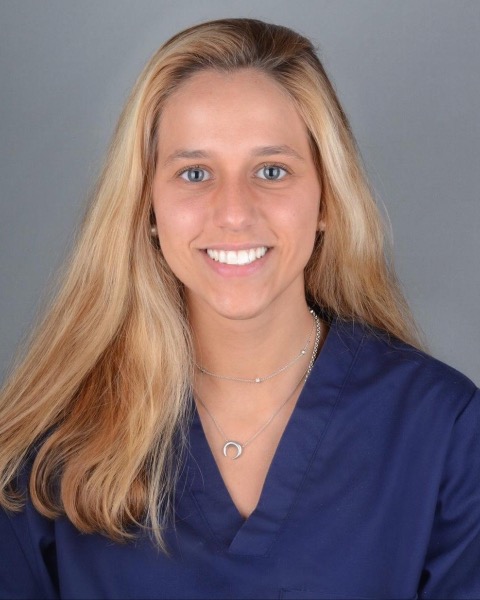Trauma
368 - Soft Tissue Exam Importance in Dental Trauma - Clinical Case


Marta Martins Coelho, MSc
Student
Faculty of Dental Medicine - University of Lisbon
Instituto Universitário Egas Moniz
Oeiras, Lisboa, Portugal- SM
Sara Magalhães, DDS
Faculty of Dental Medicine - University of Lisbon
- IC
Inês Cardoso Martins, PHD
Faculty of Dental Medicine - University of Lisbon
- AC
Ana Coelho, PHD
Faculty of Dental Medicine - University of Lisbon
- PF
Paula Faria Marques, PHD
Faculty of Dental Medicine - University of Lisbon
- PF
Paula Faria Marques, PhD
Head of Pediatric Dentistry Department
Faculty of Dental Medicine - University of Lisbon
LISBON, Lisboa, Portugal
Presenting Author(s)
Co-Author(s)
Program Director(s)
Introduction: Dento-alveolar trauma occurs frequently in children and adolescents and can result in tooth fractures and displacement, bone fractures and soft tissue injuries. In the case of coronary fractures, if the fragment is not retrieved, the adjacent tissues should be assessed through palpation and possible radiographic evaluation to ensure that it has not become embedded. It is therefore considered very important to assess not only the teeth but also the soft tissues, both in the primary and permanent dentition.
Case Report: A 10-year-old female patient who suffered dental trauma went to the dental clinic for assessment. Clinical and radiographic examination revealed a coronal fracture of tooth 21 involving the enamel and dentin, with no apparent pulp involvement (Ellis class II), pathological mobility, gingival bleeding or root fracture. Examination of the soft tissues revealed excoriation with edema of the lower lip and an incised wound, which was compatible with an injury caused by the fractured fragment impregnation. Radiographic evaluation showed the presence of the fractured coronary fragment retained in the lower lip, which was then surgically excised under local anesthesia. The fragment was discarded and the tooth was restored with composite resin. Clinical and radiographic examination at 1 month and 1 year showed normal pulp vitality, no apical lesion and the tooth remained asymptomatic. A detailed clinical and radiographic examination of patients who suffer orofacial trauma, including the soft tissues, is considered essential in the management of such cases in order to avoid future complications.
Identify Supporting Agency and Grant Number:

.jpg)